What is the caloric damage of your favourite CNY snacks?
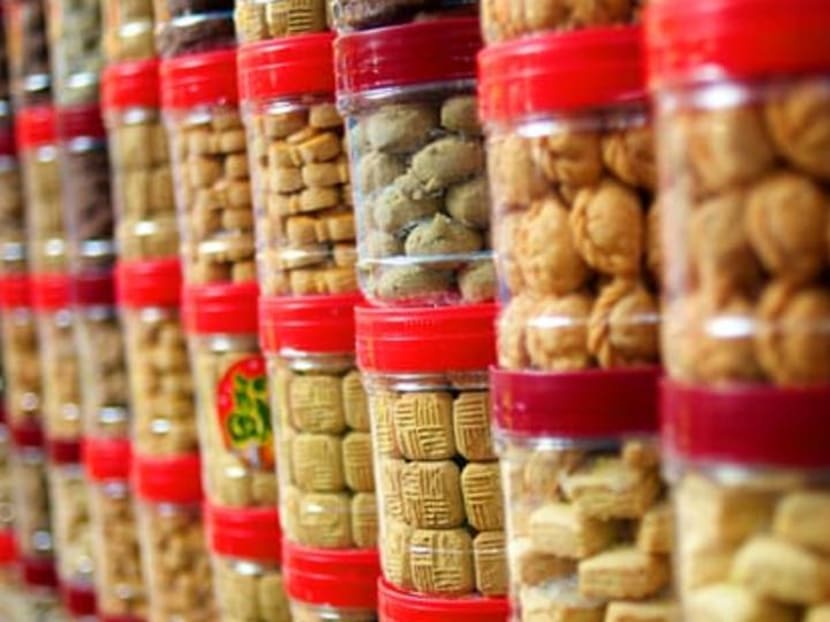
Traditional festive snacks, like melon seeds and peanuts, on display in Chinatown. (Photo: Linette Lim)
SINGAPORE: You made resolutions to eat clean and lose weight at the start of the year. But now that the Chinese New Year (CNY) celebrations are around the corner, that may be easier said than done.
While having one or two pineapple tarts or almond cookies may not tip the weighing scales, consuming these high-calorie treats consistently throughout the holidays will definitely lead to fat gain, said Tyen Rasif, a women’s fitness trainer and fitness personality.
"In general, it takes about eight to 10 hours for food to be stored as fat, and it takes 7,000 excess calories accumulated overtime for a person to gain 1kg. Chances are, most of it might be stored as fat mass if the individual is sedentary," said Rasif.
Most people overeat 39 per cent more calories than they normally do during the festive season, and nearly 45 per cent of people gain an average of 1.7kg during the Chinese New Year holidays, according to a 2012 survey by Taiwan’s Health Promotion Administration.
Excess calories are not the only thing you should be concerned about this CNY. Most traditional festive treats and dishes are packed with sodium and sugar - both of which can lead to water retention and bloating, said Rasif.
According to Bibi Chia, principal dietitian at Raffles Diabetes and Endocrine Centre, eight in 10 Singapore residents exceed the daily salt intake recommendation of less than 5g per day (equivalent to one teaspoon), or 2,300mg of sodium.
For people with diabetes or pre-diabetes, even short-term overeating can raise blood sugar levels, Chia said.
In the long run, consuming too much high-calorie and fat-laden foods might lead to a host of diseases including diabetes, as well as a higher risk of heart problems and stroke, she added.
Here, we check out the calorie content in popular CNY treats, as well as the daily activities and exercise you will need to do to avoid packing on the kilos. Bear in mind that the exact number of calories you will expend for each physical activity will depend on how hard you exert yourself and your weight.
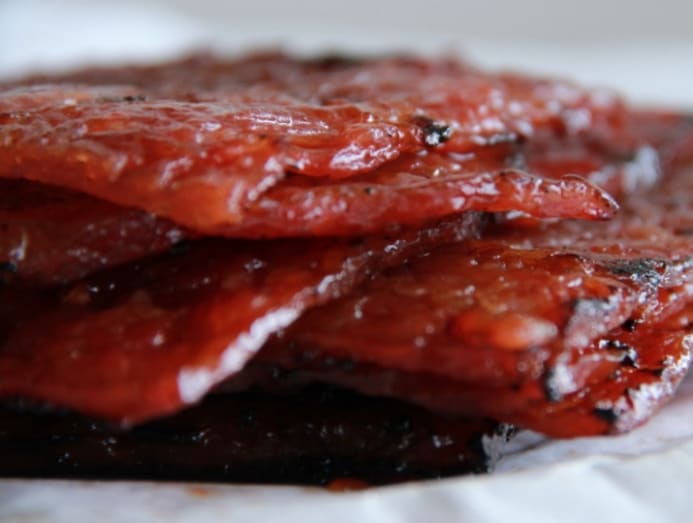
As delicious as this CNY staple is, it will easily bust your daily calorie, sodium, saturated fat and sugar intake. One slice of this savoury treat will set you back by 301 calories, 4.1g of saturated fat, 32g of sugar, and over a third of your daily sodium intake at 732mg.
The World Health Organization recommends that adults and children reduce their daily intake of free sugars to less than 10 per cent of their total energy intake. A further reduction to below 5 per cent, or roughly 25g (6 teaspoons) per day, would provide additional health benefits, Chia said.
The American Heart Association recommends keeping saturated fat intake to no more than 5 per cent to 6 per cent of total calories. For someone eating 2,000 calories per day, that will be around 11g to 13g of saturated fat, said Chia.
To burn off a single slice of bak kwa, you will need to jog for around 30 minutes or do some heavy-duty household chores like moving and carrying boxes for around 45 to 50 minutes.
PINEAPPLE TART
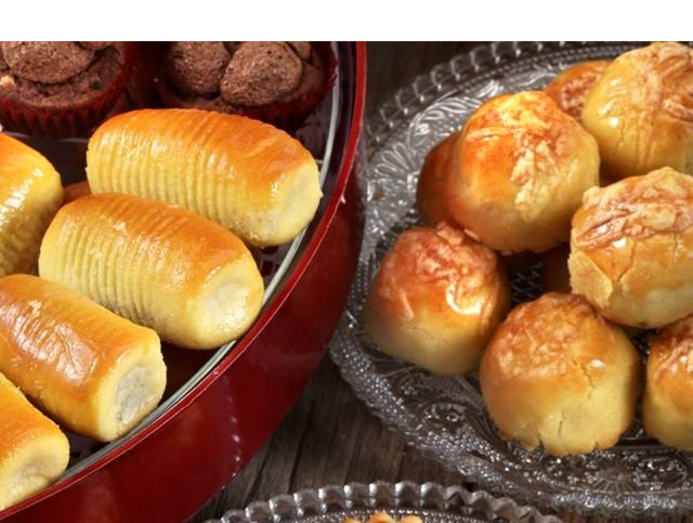
A pineapple tart contains 93 calories, 2.3g of saturated fat, 6.2g of sugar and 58mg of sodium. Chances are, you will not stop at one, so be mindful when consuming these yummy morsels.
Pop two pieces into your mouth and you will have to do 25 minutes' of vigorous jumping jacks, or clean the house for more than an hour to get rid of the excess calories.
KUEH BANGKIT

If you’re hankering for something sweet to nibble on during CNY house visiting, kueh bangkit might be a lower calorie alternative as a piece contains only 15 calories. Compared to other snacks, it is also lower in saturated fat, sugar and sodium at 0.3g, 0.9g and 2.6mg respectively.
Brisk walk or carry your baby niece or nephew for under five minutes, and you’ll be able to get rid of the calories from having one piece of kueh bangkit.
KUEH LAPIS
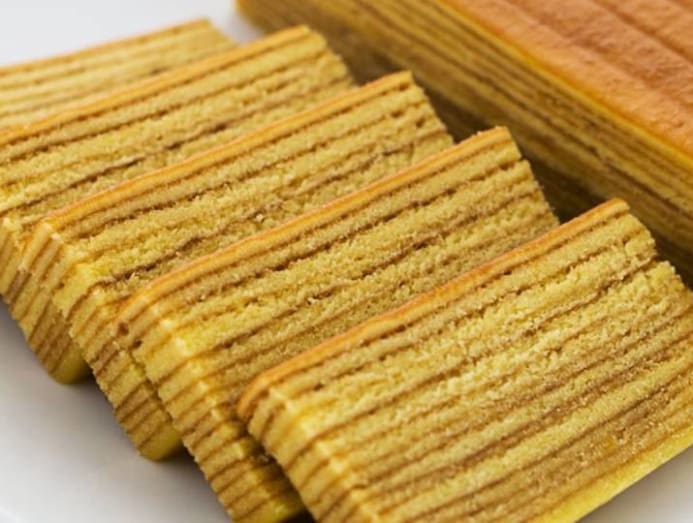
This is another calorie bomb, which can easily rival that of bak kwa. A slice of this buttery multi-layered cake will set you back by 237 calories. It contains 10.5g of saturated fat, 12.1g of sugar, and 160mg of sodium.
Work off a slice of this buttery indulgence by swimming for 30 to 40 minutes, jogging for 20 to 25 mins or sweeping the floor for around 90 minutes.
DRIED SHRIMP ROLLS
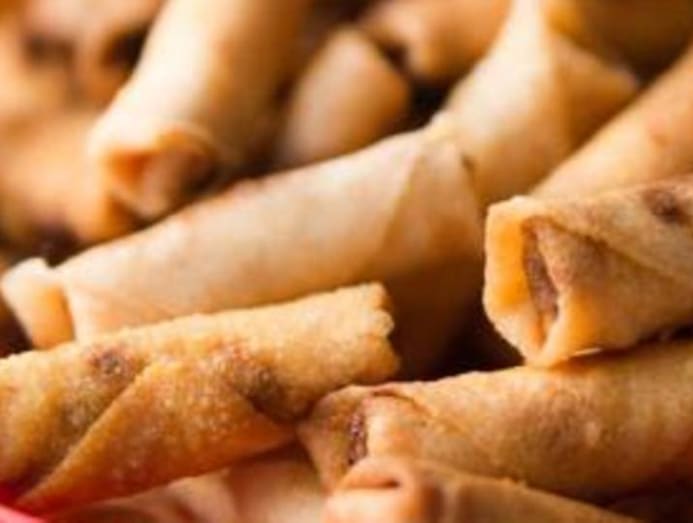
A piece of shrimp roll will set you back by 23 calories. Its saturated fat, sugar and sodium content are 1g, 0.2g and 41.2 mg respectively. Try to stop at one or two, or you’ll end up with too many hard-to-burn calories and artery-clogging saturated fat.
You will need to burn off a handful of five to six prawn rolls by doing vigorous skipping for around 15 minutes. Alternatively, vacuum the house for about 40 minutes.
LOVE LETTERS
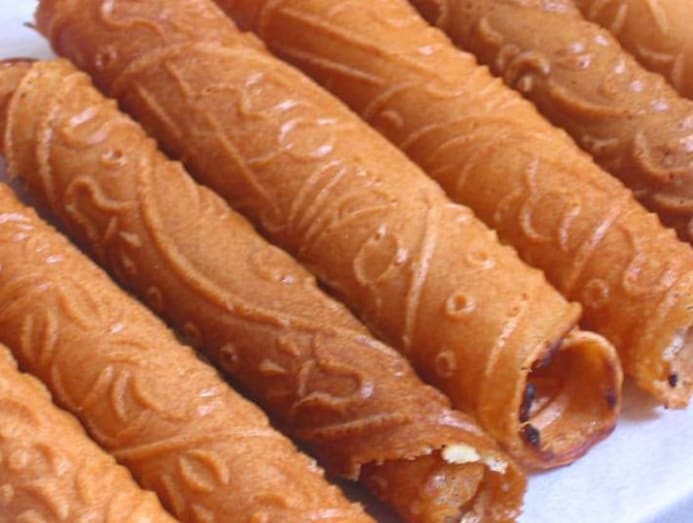
For such a light and airy snack, love letters are pretty calorie-dense. Each piece contains 56 calories, and 0.9g of saturated fat, 4.7g of sugar, and 4.4mg of sodium. Three love letters would take 20 to 25 minutes’ worth of stair-climbing to work off. You could also scrub the toilet floor for about an hour.
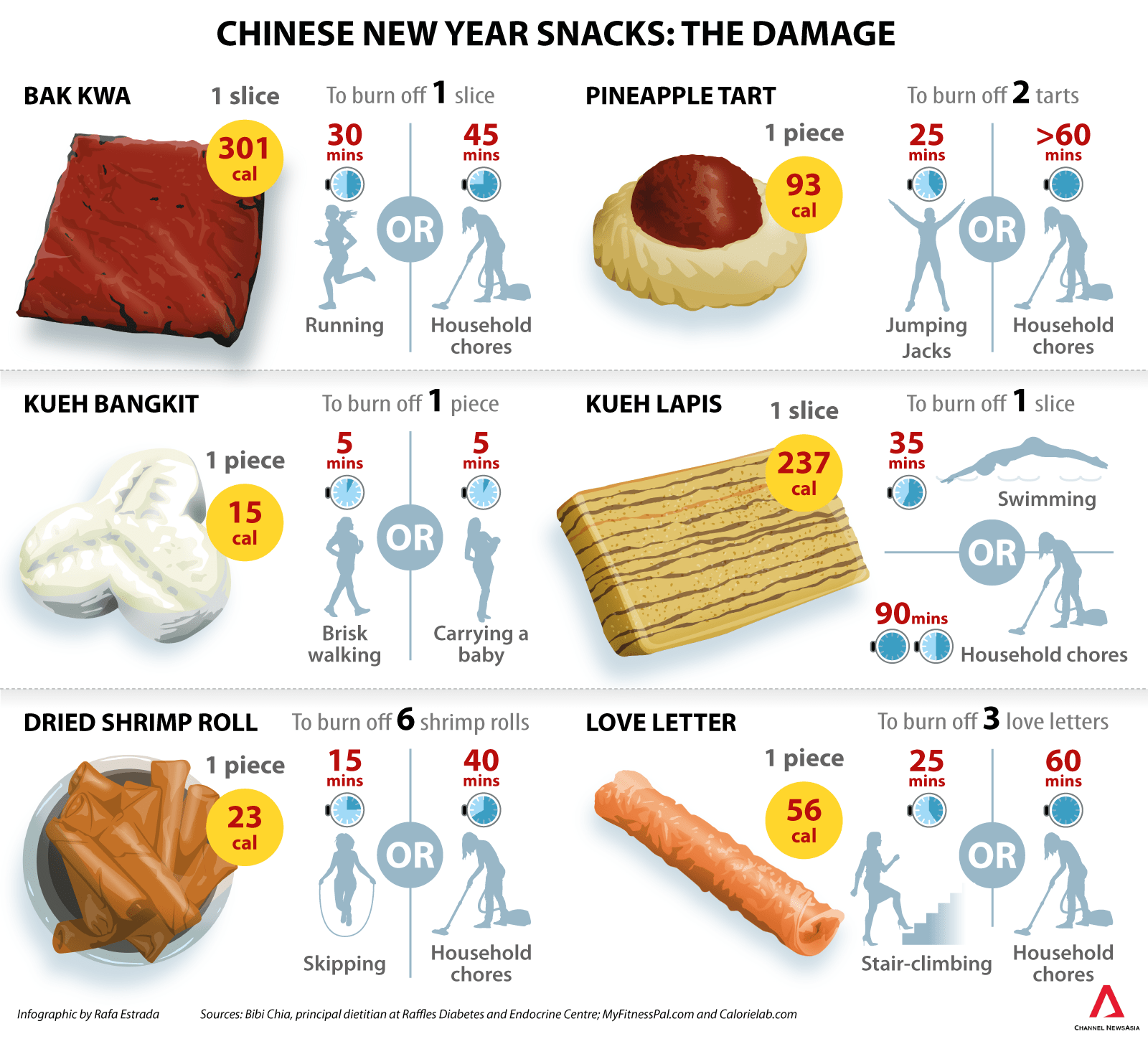
SNACK AND EXERCISE SMART THIS CNY WITH TIPS FROM THE EXPERTS
1. Snack with a purpose
Prioritise your favourite snacks and eat only those. Choose the days you want to indulge, for example, on the eve and first day of CNY, and stick to those days, said Chia.
2. Ration CNY goodies at every relatives' house
Place CNY treats on a small plate or tissue paper, and eat only from there, said Rasif. Eating straight from the box or jar makes you less conscious of how much you are consuming, she said.
3. Throw in a mix of high-intensity cardio and strength training
This helps you boost metabolism and fat burn, Rasif explained. Try this 20- to 30-minute circuit workout: squats, push-ups, sit-ups, lunges and mountain climbers. You can do this in between or after house visiting, for instance.
Aim to do each exercise for 30 to 50 seconds, with 30-second breaks in between. Repeat three or four rounds. If you can add weights, that will be a bonus. According to Rasif, these compound movements help you target multiple muscle groups and increase the calories you burn.
4. Workout within eight to 10 hours after feasting
That is the most efficient window for a workout after you consume excess calories, said Rasif. The rate of caloric burn depends on your exercise intensity.
Source: Energy and nutrient composition of snacks from Bibi Chia, principal dietitian at Raffles Diabetes and Endocrine Centre. Energy expenditure sourced from MyFitnessPal.com and Calorielab.com.





